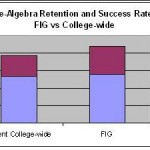Working with Evidence
This toolkit presents several effective ways to gather evidence of student learning beyond traditional student assignments and assessments. Many disciplinary faculty may not be familiar with these tools, such as the use of “think alouds,” through which students make their thinking processes evident during problem solving.
Whether working as an individual faculty member conducting an inquiry into his or her own classroom, or as a Faculty Inquiry Group engaged in collaborative inquiry, there are more or less effective ways to engage in these methods. Included in this toolkit are resources on the following methods for gathering and sharing evidence.
NOTE: Each of the tools listed below are also “Categories” in this Toolkit. (Most of them appear as “tags” as well). You can access posts and resources on each of these tools by navigating through the Categories or Tag Cloud in the right hand side bar.
-
Student Interviews [e.g. in projects at Chabot College and Glendale College]
-
Think Alouds [e.g at Pasadena City College]
-
Use of video as evidence [e.g at Los Medanos College]
-
Surveys and other assessment snapshots (CAT’s, pre/post tests, attitude surveys) [e.g. the "before and after" reading tool from Cerritos College or the "pre/post student confidence" tool from Los Medanos]
-
Common Exams [e.g. at Glendale College]
-
Use of Institutional Data [e.g at West Hills and Los Medanos]
-
Faculty Portfolios as a mode of inquiry [e.g. at Cerritos College]
We focus on these tools because they represent some of the most effective strategies for “making visible” dimensions of student learning that may not be evident in assigned student work. The tools described in the toolkit have also been chosen because they were used effectively by one or more of the campuses in the SPECC project. Their use and impact are described throughout the Windows on Learning site and reference those connections wherever possible.
Of course, there are many creative and effective ways to make use of classroom-based evidence as well. These are also represented throughout this toolkit.
REFLECTION PROMPT: What evidence are you already in the practice of gathering in the way of student work? What kind of evidence do you need to gather outside the classroom? What questions do you have about that process?
Navigate to other pages in the Faculty Inquiry Cycle:
- Developing a question
- Designing a plan for research
- Gathering and evaluating evidence
- Presenting and reviewing findings
August 20, 2008

